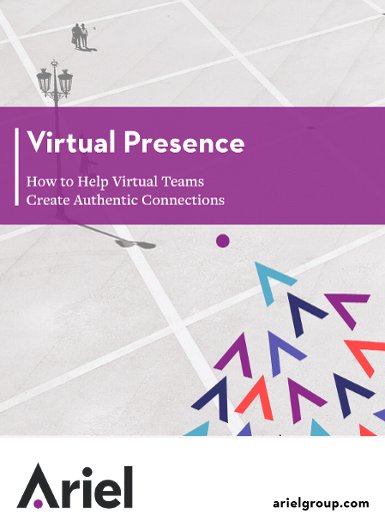Global Communication: How to Master Multi-Cultural Challenges

Non-native speakers may need more time to collect their thoughts and translate their message correctly into the new language.
“Thank you so much for your time and efforts, Maja. It has just been wonderful working with you so far. You are a very inspiring person…”
My heart sinks. This is the phone call from The Ariel Group I’ve been waiting for all day…and it doesn’t sound like good news. It’s just too exaggerated, too many positive remarks. To me as a German, all the accolades sound fishy. They are certainly an introduction to the hard truth that I won’t be an Ariel facilitator. I am so disappointed, I barely listen.
“…and we would love to continue on this journey with you.”
What?
I can’t believe my ears. I’m on board! It’s time to celebrate!
In today’s world, business colleagues can live many miles, time zones, and cultures away from each other. Yet, thanks to the rapid progress of worldwide collaboration and technology-based communication, they’re just a phone call or video conference away. This globalization presents a whole new set of challenges when it comes to business communication — and if these communication challenges are left unaddressed, they can wreak havoc on business initiatives.
When communicating with team members in different countries, or even on different continents, an awareness of cultural characteristics and variations is key. How can your business avoid miscues across the virtual and cultural divide? Here are some key things to consider:
Train managers to be knowledgeable about their teams
If your leaders manage international teams, invite them to get to know their direct reports during annual onsite meetings or through one-on-one calls. This will help managers (and leadership) to interpret and influence each individual’s behavior on group calls.
Train your organization to be knowledgeable about other cultures
Companies should be aware of cultural differences, especially in regards to communication. For example:
- What role do gender, rank, and age play in this country?
- How outspoken or how straightforward is the communication?
- Does a “yes” actually mean “yes”?
- Would I ever hear a “no”?
- How can we reach agreements together?
If your knowledge as a trainer is limited, ask colleagues who have worked with this culture. Like in offline contexts, quite a few managers adopt different leadership or communication styles depending on which culture they’re facing.
Keep the other side of the world in mind
Remind colleagues that when planning a meeting, they need to consider the different time zones. Make a company policy that your organization will always avoid non-business hours – or that teams will take turns for meetings at unusual hours. Remember to take national holidays and events into consideration. Have leaders send out invitations as early as possible to provide ample time for colleagues to accept.
Remind managers and leaders to slow down and be patient
Whether your managers are native speakers talking to non-natives, or vice versa, have them remember this: slow down. This will give colleagues the chance to get used to the manager’s accent and their voice. Coach them to use breathing pauses so that others can squeeze in a question or remark. And remember, silence is not necessarily a lack of interest. Non-native speakers may need more time to collect their thoughts and translate their message correctly into the new language. Distance can impact silence too, as there may be a delay on the line.
Prepare – and allow partners to prepare
Remind meeting organizers to clearly state the purpose of the call and provide an agenda. Encourage them to send out crucial content (such as presentations or financial documents) before the meeting so that people can listen and read at the same time. If the call is in another language than the participants’ native one, this will help everyone understand (as they can see the written words and hear them spoken) and allow participants to be more present on the call.
Dial-up on expressiveness
They say that a smile is the same in every language, right? Managers who incorporate non-verbal cues can help to bridge the language gap. Coach organizers to use their faces, hands and voices purposefully. Be sure their gestures can be seen and understood. Eye contact into the camera will help, too.
Don’t get lost in translation
Create agreed-on short signals for misunderstandings or questions i.e. raising a hand, a quick “Pardon?” etc.; this will allow the organizer to answer them without losing their thoughts. Moreover, remind organizers to choose stories, proverbs, and metaphors wisely: double-check them both for understanding, and for appropriateness.
Dankeschön!
Encourage managers and leaders to learn a few words in the native language of the colleagues. It does wonders for the atmosphere! People will appreciate your effort and feel more at ease.
Skillfully managing multi-cultural communication through technology will allow you and your team members to create a global working environment that stimulates and heightens understanding, trust, and employee engagement – ultimately impacting the bottom line for your company.
Remember, the most important asset your company can bring to a virtual conversation – as to any conversation, really – is individual presence. Remind employees to treat virtual meetings with the same importance than they would treat any other meeting. Be fully present and remind colleagues to avoid multi-tasking.
For more virtual presence tips, go here.
